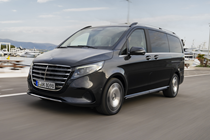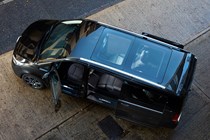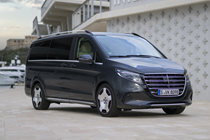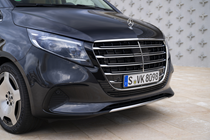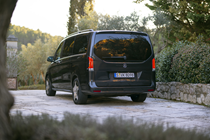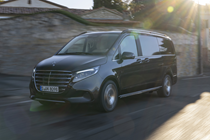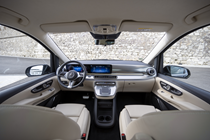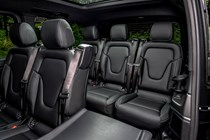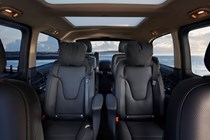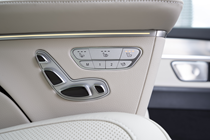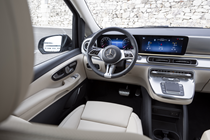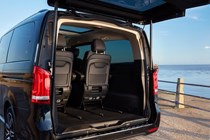
Mercedes-Benz V-Class engines, drive and performance
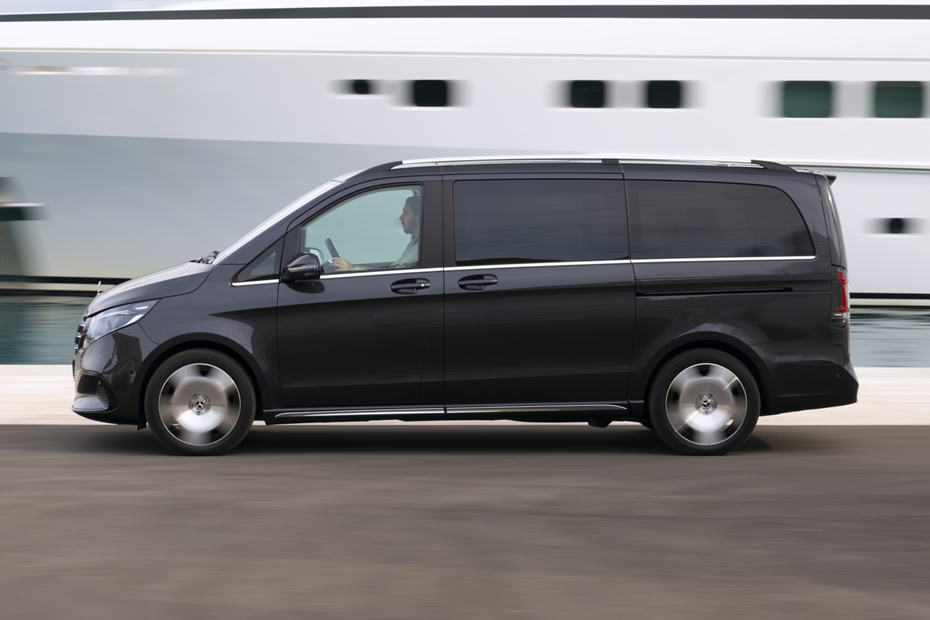
- Older diesel engines are gruff but gutsy
- Newer engines are significantly more refined
- All V-Classes have automatic transmissions
Diesel engines
The latest V-Class models are all powered by modern 2.0-litre turbodiesel engines, with V220d and V300d variants on offer. There is a petrol engine in the works for the V-Class but we haven’t tested it yet. When we do, we’ll report our findings back here.
The V220d produces 163hp and 380Nm of torque (pulling power), and is capable of 0-62mph in 11.1 seconds. The V300d is a significant upgrade over this, with 239hp and 500Nm, with a further boost of 30Nm during hard acceleration. It’s appreciably quicker, too, requiring just 7.9 seconds for the 0-62mph dash before heading on to a top speed of 137mph.
Both of these 2.0-litre diesels are teamed with a nine-speed automatic gearbox that sends drive to the rear wheels. With so many ratios to choose from, the transmission can sometimes be indecisive, but it’s rarely jerky or intrusive.

At urban speeds, both 2.0-litre engines feel very similar, the less torquey motor making up for its deficiency by accessing its peak pulling power 400rpm earlier. Both feel urgent off the line and pootle about at 30mph very calmly.
Therein lies the decision: if you’ll be primarily driving the V-Class within city limits then stick to the V220d – it’s only out on the open road where overtakes are likely to feature that the extra grunt of the V300d feels useful.
While a lack of petrol engines for the UK-market Mercedes-Benz V-Class isn’t a really surprise, that there’s no hybrid version may disappoint some buyers. The VW Multivan offers petrol, diesel and a plug-in hybrid variant, however, so if you’re looking for more choice try that.
The Mercedes EQV electric MPV is based on the V-Class, though.
What’s it like to drive?
- Better than its size might suggests
- Corners well but body roll is ever-present
- V-Class performs best when driven gently
At over five metres long, almost two metres tall and over two tonnes in weight, the V-Class can never quite shake off its van-like handling characteristics. However, Mercedes has improved the experience for V-Class drivers thanks to the Agility Control suspension and the latest generation of adaptive Electronic Stability Control (ESC).
While capable of cornering quickly, there is still some noticeable body roll; you soon learn to either trust the grip offered by the chassis or slow down. We’d opt more often for the latter, as this is very much a vehicle that performs best when driven moderately – the light steering hardly encourages you to press on, either.
Mercedes is aware of the limitations that such boxy packaging affords and the Intelligent Drive system uses a variety of radar, camera and ultrasound sensors to improve the experience on the move – including Crosswind Assist, making it feel much more stable than those slab sides suggest it ought to.
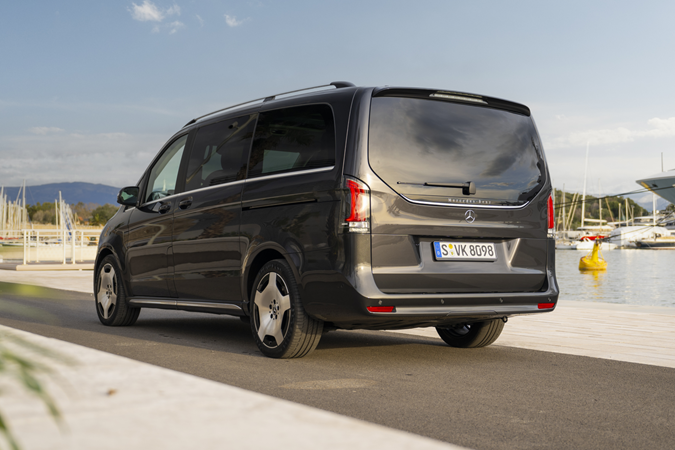
Considering its van-based origins, comfort is surprisingly good. There’s little of the crashing, banging and rattling around over surface changes as found in many rivals, with Mercedes claiming that a stiffer bodyshell reduces the vibrations that make their way into the cabin while adjustable dampers adds to its pliancy.
The ride quality is particularly impressive at speed, with the V-Class managing to float gently over most road imperfections with an ease akin to Mercedes’ executive saloons – although it has to be noted that with just the driver in the car the V-Class feels less well planted.
The powerful brakes inspire confidence, as they’d need to with the potential to carry so many people on board.


